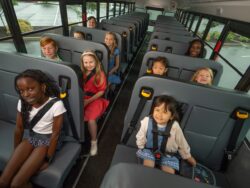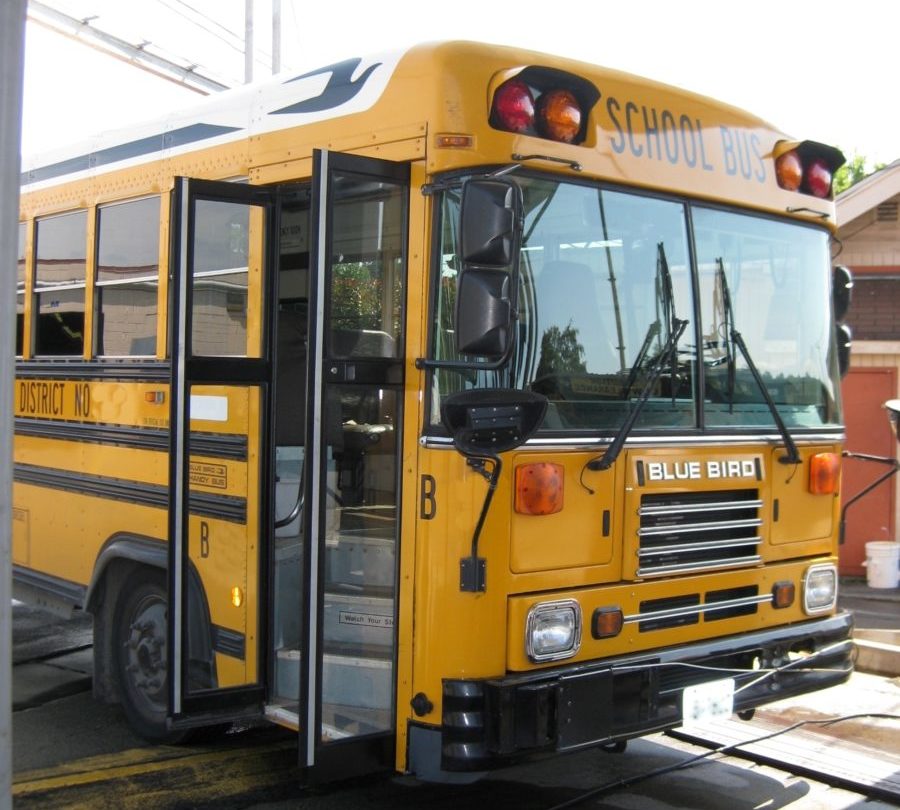In a first for the school bus industry, bus maker Blue Bird Corporation has announced that, starting this year, lap-shoulder seat belts will be standard equipment for all seating positions on all of the company’s school buses.
Read More from “Blue Bird Raises the Bar for School Bus Safety”Topic: School Bus Safety
New School Bus Resource Defines Best Practice by Child Age
Safe Kids Worldwide recently compiled a best-practice document for CPS on school buses. Entitled Best Practice: Child Passenger Safety Securement Recommendations for Pre-School and School Age Children on School Buses, the document is laid out in a grid fashion. Rows list the child-age groups that signify distinct stages for CPS on school buses (starting with infants), while the columns give best-practice guidance, explanations/citations, and the rationale for distinguishing each child-age category.
Read More from “New School Bus Resource Defines Best Practice by Child Age”
SRN Surveys RF CR Fit on School Buses
Babies as young as 6 weeks old ride on school buses to attend Early Head Start and teen parent programs. Children this young must ride rear facing, and are safest riding this way as long as they fit the size limits of their RF child safety restraint systems (CSRS).
New Jersey Upgrades School Bus Seat Belt Law
In August, the governor of New Jersey signed a law that will require new school buses of any size in that state to be equipped with lap-shoulder belts in all seating positions. The law goes into effect 180 days after enactment, giving transportation departments in that state time to adjust to the new requirements.
Read More from “New Jersey Upgrades School Bus Seat Belt Law”
NHTSA Head Announces Agency’s Strong Support of Lap-Shoulder Belts on All School Buses
On November 8, Safe Ride News was in attendance when NHTSA Administrator Mark Rosekind* ((Update: Mark Rosekind is no longer the NHTSA Administrator.)) addressed school bus industry leaders at the National Association for Pupil Transportation Annual Summit. Administrator Rosekind, while reinforcing the fact that today’s school buses are the safest way to transport kids to school, voiced the agency’s strong support for the eventual goal of equipping all new school buses with lap-shoulder belts.
A Major Problem With Large School Buses?
Some Are Actually Small
As technician candidates, we learn that children on large school buses are protected by compartmentalization, but when the bus is small, seat belts are required to protect occupants properly. We’re also taught that the cutoff between small and large buses is a 10,000-pound gross vehicle weight rating (GVWR).
NHTSA Day-Long Meeting Explores Issue of Seat Belts on School Buses
On July 23, NHTSA convened an eight-hour meeting to discuss the “current state of knowledge” regarding three-point belt systems (aka lap-shoulder belts) on school buses. The meeting’s purpose was to identify operational and policy challenges and solutions regarding the use of lap-shoulder belts on buses and to explore innovative funding approaches that could “serve as a catalyst for change.”
Read More from “NHTSA Day-Long Meeting Explores Issue of Seat Belts on School Buses”
Motorcoach Safety: Agency Provides Guidance For Booking a Safer Trip
A motorcoach is a large, non-school bus that does not serve fixed routes (like city transit), but instead travels longer distances, usually on highways. While motorcoaches have a relatively good safety record compared to most other vehicle types, they do not have many of the safety features required of school buses. Nonetheless, groups of children frequently use these types of buses for field trips and sports outings, especially when the trip covers long distances.
Read More from “Motorcoach Safety: Agency Provides Guidance For Booking a Safer Trip”
School Bus Evacuation of Students in CSRS Requires Planning, Training
At the Transporting Students with Disabilities and Preschoolers (TSD) Conference in March, Charley Kennington, of Innovative Transportation Solutions, and Kathy Furneaux, of the Pupil Transportation Safety Institute, discussed an important aspect of transporting groups of children: having a plan for how to get all students off the vehicle quickly in an emergency. When a school bus carries children who ride restrained in five-point harnesses, you can readily see how important it is to practice and prepare for emergency evacuation. In fact, knowing how a child would be evacuated in an emergency should be considered as important as learning how the CSRS is installed.
Read More from “School Bus Evacuation of Students in CSRS Requires Planning, Training”
Winds Blowing Warm and Cold for Seat Belts on School Buses
Once again, in the heat of August, NHTSA aimed an icy blast at efforts to require lap-shoulder belts on all school buses. A petition submitted by Safe Ride News Publications and others in January, 2010 (SRN January/February 2010), after a fatal school bus crash in Connecticut, was denied by NHTSA on August 25, 2011. The agency said, “We have not found a safety problem supporting a federal requirement for lap-shoulder belts on large school buses, which are already safe.”
Read More from “Winds Blowing Warm and Cold for Seat Belts on School Buses”







